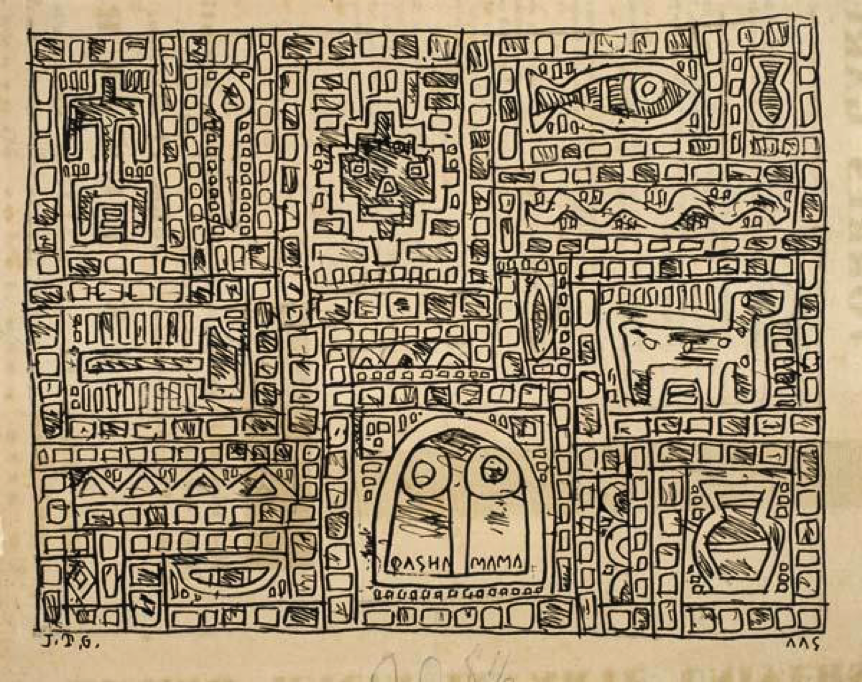Untitled (Constructivo)

Four years prior to the making of this drawing around 1938, Joaquín Torres-García returned to Uruguay, his birth country; having left at the age of sixteen, he spent almost four decades in Europe and the United States. By the time he created Constructivo, he had gained a thorough grasp of the cultural context in which various ancient artifacts were made, especially pre-Columbian ones; he had also developed his style of Constructive Universalism. Like many of his other works of this period, Constructivo reflects Torres-García’s involvement with the neoplastic art movement, his interest in indigenous American cultures, and his ambition to translate a cosmic order into his art.
Like Mondrian and other neoplastic artists with whom he collaborated, Torres-García believed that real art should refrain from imitating nature. In Constructivo, he does not attempt to depict any natural objects but employs horizontal and vertical lines to construct his drawing, aiming for a harmonious composition. However, unlike his colleagues who attempted to depersonalize art, Torres-García showcases personal touches by drawing freehand lines, filling in certain spaces with a few gestural strokes, and incorporating elements that suggest specific cultural references.
Symbols play a crucial role in the mature works of Torres-García; he has, in fact, made elaborate lists to categorize his repertoire of signs. For him, symbols bridge the real world and abstract ideas. The fish on the upper right, for example, represents nature and life. The key is a sign for reason. The figure at top left embodies the highest ideals of human beings. Some symbols are sourced from native South American civilizations. The arch-shaped symbol, for example, represents Pachamama, the fertility goddess worshipped by the indigenous people of the Andes. The animal might allude to an alpaca, and the mask and the jar could well be references to other ancient artifacts.
Torres-García’s interest in this earlier art began when he saw a pre-Columbian exhibition in Paris in 1928. The schematic quality and spirituality of ancient American art became a major source of inspiration for him. Upon his return to Uruguay in 1934, where there was little interest in indigenous art at the time, Torres-García established workshops and encouraged his students to study objects of the American continents. This not only enriched his own works, but it also created a new cultural and artistic identity for Uruguayan and South American art.
Ningyi Xi ‘17
Davis Museum Summer Intern, 2015